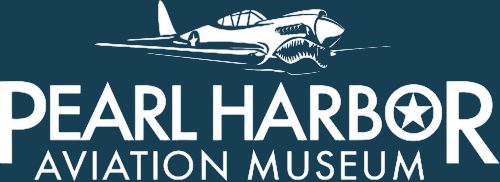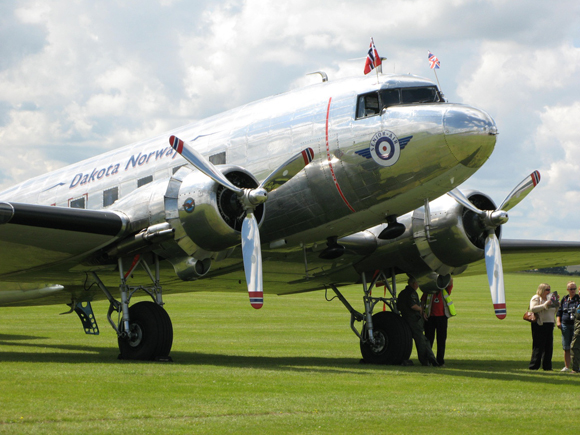Douglas C-47/DC-3 “Cheeky Charley”
Twin-engine Military Transport and Cargo Aircraft with a Crew of Three

Figure 1: The Cheeky Charley in Hawaii, in Military Camouflage Source: www.oldprops.ukhome.net
Key Points
- The C-47 “Gooney Bird” was a military version of the Douglas DC-3, which entered service in 1936. The DC-3 is one of the most important transport aircraft of all time.
- More than 16,000 civilian and military versions of the DC-3 were built.
- C-47s could carry 28 passengers or 6,000 pounds of cargo, at a cruising speed of 160 mph, over a range of up to 1,600 miles. Civilian DC-3s normally served 21 passengers in seven rows of seats, with two on one side an isle and one on the other.
- C-47s were used everywhere in World War II. They hopped among in the Pacific to fly long distances. They also flew supplies “over the hump” from India to China.
- After World War II, most C-47s and other military variants were sold as surplus to airlines, making the DC-3 dominant for short and medium routes for decades afterward.
- In Vietnam, some C-47s were converted into AC-47 “Spooky” gunships. Each Spooky had three 6-barrel 7.62 mm miniguns that fired out the side of the aircraft. Each minigun could fire up to 6,000 RPM or 4,000 RPM, depending on the model. Spookies flew pylon turns around ground targets.
- Our aircraft served in the Pacific from 1943 to 1945. One of its names was “Cheeky Charley.” Afterward, it was used by a series of Australian airlines. When used by the Australian National Airlines, it was called “Tarrana” (Kangaroo). In 1972, Charley flew to Hawaii to handle commercial cargo service. While here, it had cameo roles in two movies—Pearl Harbor and Outbreak. During its time at Genavaco Corporation, it was used for interisland cargo operations in 1976. Genevaco called her “Tyranna.”
- By the end of its war service, this aircraft had flown a little over 3,000 hours. By the end of her civilian life, this was 55,000 hours. In April 2012, Charley was towed from the Honolulu International Airport to its new home, Pacific Aviation Museum on Ford Island in Pearl Harbor.
Introduction
The Boeing website states that the Douglas DC-3 “is universally recognized as the greatest airplane of its time. Some would say that it is the greatest of all time.”[1] Certainly there is no doubt that passenger versions of the DC-3 introduced new levels of speed, comfort, and range. Beginning in 1936, DC-3s carried people across the U.S. continent with “only” three refueling stops and in less than 18 hours. When World War II became imminent, production shifted to military versions. The main USAAF variant was the C-47 Skytrain, which the British Commonwealth called the Dakota. Over 16,000 civilian and military versions of the DC-3 were built, including 607 civilian DC-3s, over 10,000 C-47s and other U.S. military variants, almost 5,000 Lisunov Li-2 in the USSR, and even 487 Showa L2Ds with Mitsubishi Kinsei engines in Japan.

Figure 2: Japanese Showa L2D Source: Wikipedia, Showa/Nakajima L2D
The DC-3 Emerges
Douglas introduced its DC-2 in 1932, with encouragement from TWA. (Only a single DC-1 prototype was built). The DC-2 could carry 14 passengers or 3,600 pounds of cargo. In comparison, the competing Boeing 247 could only carry 10 passengers. Figure 3 shows that the Douglas DC-2 and DC-3 shared a strong family resemblance.

Figure 3: Douglas DC-2 Source: Wikipedia, Douglas DC-2
Surprisingly, the DC-3 almost did not get built. American Airlines pushed Douglas to produce a larger aircraft that could carry more passengers and have sleeper berths. Douglas was reluctant to do so given the success of the DC-2 and uncertainty about the commercial viability of a larger aircraft. However, Douglas relented when American guaranteed an order for 20 of the aircraft. This became the Douglas Sleeper Transport.

Figure 4: Douglas Sleeper Transport Source: California State College
Douglas then extended this design to be the iconic DC-3, which carried 21 passengers with traditional seating in 7 rows of 3. A legend was born.

Figure 5: DC-3 Seating Source: California State College

Figure 6: DC-3 Cockpit Source: Paul Phelan, Aviation Advertiser
Today, we think of the DC-3 as a relic. When it came out, however, it was the latest and greatest thing in passenger speed, comfort, and range. A Douglas advertisement placed a DC-3 by a Cord Speedster to show their similar lines and to emphasize the new airplane’s performance.

Figure 7: Douglas DC-3 and Cord Speedster Source: Boeing

Figure 8: Norwegian Douglas DC-3 at the Duxford Air Show, 2007 Source: [email protected]
From its introduction in 1936, the DC-3 revolutionized the air transport industry. It was an advanced design with multi-cellular wings and an autopilot. Its innovative design won the Collier Trophy that year. The president of American Airlines said that the DC-3 was the first airliner that was profitable with passenger carriage alone, without government subsidies. Other airlines were quickly sold on the $160,000 DC-3 as well. By the beginning of 1939, an astounding 90% of the world’s passengers were flying on DC-2s or DC-3s.
The C-53 Skytrooper
As war came closer, the USAAF began to take over DC-3s originally destined for the airlines. The first of these military DC-3s was the C-53 Skytrooper, which was little-changed from the DC-3. It was designed to carry 28 paratroopers into combat.

Figure 9: Paratroopers U.S. Library of Congress, fsa.8e0022.

Figure 10: Paratroopers Deploying Source: Imperial War Museum, 4700-30 BU 1162.
The C-53 was also designed to tow gliders. Normally, the glider would trail the aircraft at take-off.

Figure 11: C-47 Taking Off, Towing a Glider Source: Imperial War Museum, 4700-06 EA 37974.
For field recovery, the C-53 would snag a tow line, yanking the glider into the air. It was even possible to tow a pair of gliders.

Figure 12: Retrieving a Glider U.S. National Archives, 342-FH-3A20143-82467AC
The Definitive C-47 Skytrain
Given the cargo limitations of the C-53, the USAAF purchased only about 380 Skytroopers. Then production began on the improved C-47 Skytrains. Douglas built more than 10,000 C-47s. However, the first C-47 did not fly until just after the Pearl Harbor attack, so civilian DC-3s and C-53s had to hold the line until massive numbers of C-47s began to appear.

Figure 13: C-47s in Flight Source: U.S Air Force Photo
Compared to DC-3s and C-53s, C-47s had strengthened floors for carrying cargo and stronger landing gears. However, their most visible feature was their double-wide doors designed to facilitate cargo loading and unloading. It was even possible to push a ramp up to the door and drive a jeep inside.

Figure 14: C-47s and R4Ds in the Berlin Airlift Source: U.S. Navy National Museum of Naval Aviation

Figure 15: Driving a Jeep into a C-47 Source: USAAF Photograph at Lonesentry.com
More versatile than the C-53, the C-47 quickly became the standard model, even taking over paratroop insertion. Soon, the C-47 “Gooney Birds” were everywhere in the war. They were especially important in the Pacific, where they island-hopped to fly very long missions. They especially also critical in moving supplies “Over the Hump” from India to China after Burma fell.
For wounded soldiers, its ability to do medical evacuation was literally a life saver. The situation inside was crude by modern standards, but the C-47 was the only option in most theaters.

Figure 16: Medical Evacuation Source: United States Army Air Forces
The RD4
The Navy version of the C-47 was the RD4. In the World War II Navy designation system, R stood more-or-less for transport, and 4D indicated that this was the fourth transport aircraft from Douglas.

Figure 17: Navy R4D Source: United Kingdom, public domain.
After the War
After the war, the armed forces dumped most of their C-47s and other military versions of the DC-3 on the civilian market. Airlines quickly converted this flood of aircraft into civilian cargo and passenger airplanes. Although DC-3s lacked the range of the new four-engine civilian aircraft that were becoming popular for longer flights, their extremely low cost, high reliability, and ability to land everywhere made them a natural for almost everything else. DC-3s dominated the civilian aircraft market for many years, and the aircraft’s lifespan was lengthened by such extensions as turbofan engines. Quite a few DC-3s are still in use.
Vietnam EC-47s and AC-47s Spooky
Although the Air Force reduced its C-47 inventory after World War II, it continued to use Gooney Birds heavily. In Vietnam, in addition to C-47s providing passenger and cargo services, EC-47s took on electronic warfare tasks. They quickly became known as the “Electric Gooneys.”
More dramatically, the C-47s were finally given guns and redesignated AC-47s. Three six-barrel 7.62 mm General Electric miniguns would fire out the left side of the aircraft. One fired through the open door, the other two through windows. These AC-47s were called Spookies or Dragons (after Puff the Magic Dragon).

Figure 18: AC-47 Gunship with Its Three Miniguns Visible Source: Marine Aviation Museum
In action, the C-47 flew a pylon circle on the targets. Initially able to fire up to 6,000 rounds per minute from each minigun (later up to 4,000 rounds per minute to conserve ammunition), the AC-47s could fire a devastating volume of bullets into any target that lacked strong anti-aircraft defenses. The pilot was the actual gunner, controlling the weapons through a button on the control yoke and using a camera viewfinder attached to the left window to aim the gunfire. AC-47s were soon joined by the much more powerful and more heavily armed AC-130 gunships.

Figure 19: AC-47 Gunship Pass Source: Marine Aviation Museum

Figure 20: AC-47 Gunship in Pylon Turn Source: Marine Aviation Museum
Our C-47
Our C-47, which was called Cheeky Charley during its World War II career, had a distinguished service record in the Pacific. Afterward, it operated in Australia until 1972, when it was transferred to Hawaii. It came to Pacific Aviation Museum in April, 2012. It’s service life exceeded 50,000 flight hours.
Construction
Our C-47 was completed at the Douglas Long Beach Plant in October 1943.
It was built as a C-47-A-65-DL.
Douglas serial number was 18949.
USAAF serial number was 42-100486.
Service in World War II
Delivered to the 5th Air Force at Brisbane on December 12, 1943.
Operated by 40th TCS as “Cheeky Charley” with nose number 32.
Also operated by the 6th TCS, the 67th TCS, and the 68th TCS.
Transfer to Civilian Use in Australia
1945
Withdrawn and transferred to the U.S. Foreign Disposals Commission in 1945, with 3,012 flight hours.
Converted to DC-3A with seating for 21 passengers.
Given Australian Aircraft Registry number VH-ANX.
Registered to Australian National Airlines, with the name “Tarrana” (Kangaroo).
Served with other airlines during its time in Australia.
Converted to freighter configuration in 1970.
Back to the United States
Flown to Hawaii in 1972.
Purchased by Inter Island Transfer, which carried outsized tourist luggage to resorts.
Received U.S. civilian serial number N99131.
Leased to Genavaco Corp. for cargo operations in 1976. Named the “Tyranna”
Flown by Aloha Airlines on its 40th anniversary in April 1998. (Having flown more than 51,000 by that date.)
Arrived at Pacific Aviation Museum in April 2012, with 55,000 flight hours.
Characteristics of the C-47A
General Characteristics
| Crew | 3 (pilot, co-pilot, flight engineer) |
| Passengers | 28 troops |
| Cargo | 6,000 lb (2,700 kg) |
| Empty weight | 18,135 lb (8,226 kg) |
| Loaded weight | 26,000 lb (11,793 kg) |
| Maximum takeoff weight | 31,000 lb (14,061 kg) |
| Length | 63 ft 9 in (19.43 m) |
| Wingspan | 95 ft 6 in (29.41 m) |
Powerplant
| Engines | Two Pratt & Whitney R-1830-90C Twin Wasp 14-cylinder radial engines |
| Horsepower (each) | 1,200 hp |
| Supercharger | 1-stage, 1-speed |
| Other Aircraft that Used this Engine | PBY, F4F, B-24 |
Performance
| Maximum Speed | 224 mph (195 kn, 360 km/h) at 10,000 ft (3,050 m) |
| Cruise Speed | 160 mph (139 kn, 257 km/h) |
| Range | 1,600 mi (1,391 nmi, 2,575 km) |
Bibliography
Note: All links last visited in April, 2012.
Arizonawrecks.com, Douglas C-53B Skytrooper.
Aussieairliners.org. H-ANX. Douglas C-47A-65-DL. c/n 18949, http://www.aussieairliners.org/dc-3/vh-anx/vhanx.html
Boeing, DC-2 Civilian Transport, http://www.boeing.com/history/mdc/dc-2.htm
Boeing, DC-3 Civilian Transport, http://www.boeing.com/history/mdc/dc-3.htm
Boeing, Skytrain Military Transport, http://www.boeing.com/history/mdc/skytrain.htm
Centennial of Flight Commission, The Douglas DC-3, http://www.centennialofflight.gov/essay/Aerospace/DC-3/Aero29.htm
Coates, Ed, VH-ANX “Tarrana,” http://www.edcoatescollection.com/ac1/austa2/ANA Fleet/VH-ANX.html
DC-3 Aviation Museum, Gene E. Guthrie Collection. http://www.dc3museum.org/content/gallery/Gallery/Gene+E+Guthrie+Collection
Francillon, Rene J. (1979) McDonald Douglas Aircraft since 1920, London: Putnam.
Gunston, Bill (1980) The Illustrated Encyclopedia of Propeller Airliners, New York: Exeter Books.
Marine Aviation Museum, dba Vietnam War Flight Museum, Douglas AC-47 “Spooky,” http://vietnamwarflight.com/aircraft/spooky.shtml
Mutza, Wayne (2009). Gunships: The Story of Spooky, Shadow, Stinger, and Spectre, North Branch, Minnesota: Specialty Press.
Wikipedia, Douglas AC-47 Spooky.
Wikipedia, Douglas C-47 Skytrain.
Wikipedia, Douglas DC-2.
Wikipedia, Douglas DC-3.


